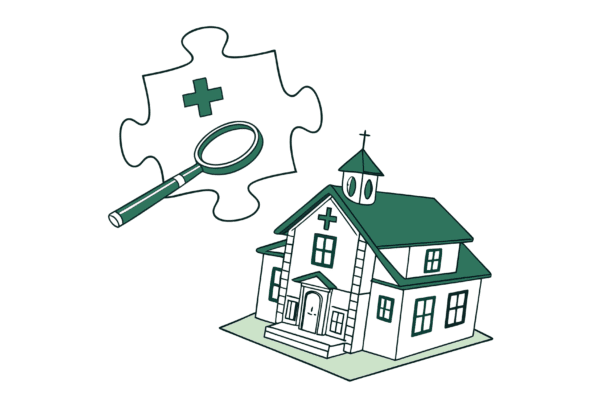The market for Geriatric Behavioral Health in North Dakota presents a unique window of opportunity for practice owners. A rapidly aging population is driving demand, but capitalizing on this trend requires careful planning and informed navigation. This guide offers you key insights into the current market, the sale process, and how to position your practice to achieve its maximum value, ensuring your legacy and financial future are secure.
Market Overview: A Rising Tide in the Peace Garden State
Your Geriatric Behavioral Health practice is more critical than ever in North Dakota. The market dynamics are shifting in your favor, driven by a clear and powerful demographic trend. This isn’t just a statewide event. Certain regions are experiencing even more accelerated growth.
A Growing Need
North Dakota’s senior population is expanding rapidly. It was just 14.4% of the population in 2011 and is projected to reach 17.6% by 2025. In some western counties, the 65-and-older demographic is expected to more than double in that same timeframe. This creates a rising, non-stop demand for the specialized behavioral health services you provide.
The Buyer’s Perspective
Sophisticated buyers, from regional health systems to private equity groups, see this trend. They are not just looking for practices. They are looking for well-run platforms in markets with built-in growth. North Dakota’s demographics make it an attractive target, turning your practice into a strategic asset for buyers looking to establish a foothold in a growing service line.
Key Considerations for Your Practice
While the market is strong, a successful sale depends on the details of your specific practice. Buyers will look past the top-line numbers to understand the foundation of your business. How reliant is the practice on you personally? A business with multiple providers and systematized operations is often valued more highly than a solo practice. Your story is also important. Buyers are not just purchasing your past performance. They are investing in your future potential. A clear narrative about growth, whether through expanding telehealth services or reaching underserved rural communities, can significantly increase buyer interest and valuation. Proper preparation before a sale can dramatically increase the final price.
What We’re Seeing in the Market Right Now
The demand for Geriatric Behavioral Health services in North Dakota has not gone unnoticed. We are seeing a significant increase in M&A activity from a diverse group of buyers, creating a competitive landscape that can benefit a well-prepared seller.
Three key trends define today’s market:
1. Private Equity is Engaged. Behavioral health is a top-tier specialty for investors. They are actively seeking practices like yours to serve as a “platform” for future growth. They often bring capital and operational expertise that can help a practice expand rapidly.
2. Strategic Buyers are Expanding. Large hospital systems and regional healthcare providers are looking to broaden their service lines. Acquiring an established geriatric behavioral health practice is faster and more effective than building one from the ground up, making your business a prime target.
3. Valuations are Strong. Because of the high demand and competitive tension, valuation multiples for high-quality behavioral health practices are at or near all-time highs. This favorable environment won’t last forever.
Navigating the Sale Process
Selling your practice is a structured journey, not a single event. A well-managed process protects your confidentiality and creates the competitive tension needed to maximize your final sale price. We see it in three main phases. First, there is preparation. This is where we work with owners to analyze financials, normalize for owner-specific expenses, and craft the growth story. The second phase is confidential outreach. We identify and discreetly approach a curated list of the most likely buyers. The goal is to generate multiple offers without alerting your staff or community. Finally, there is negotiation and closing. This is where you select the best partner and navigate the final due diligence. It is the phase where many deals fall apart without experienced guidance.
Understanding Your Practice’s True Value
What is your practice really worth? The answer is more complex than a simple revenue multiple. Sophisticated buyers value your practice based on its Adjusted EBITDA, or Earnings Before Interest, Taxes, Depreciation, and Amortization. This figure represents your practice’s true cash flow after “normalizing” for things like above-market owner salaries or one-time expenses. That Adjusted EBITDA figure is then multiplied by a number that reflects your practice’s quality and risk profile. Behavioral health practices currently command strong multiples. The right preparation can significantly increase both your Adjusted EBITDA and your multiple.
| Factor | Lower Valuation | Higher Valuation |
|---|---|---|
| Provider Model | Owner-dependent | Multi-provider, associate-driven |
| Growth | Stagnant or slow growth | Clear path for expansion |
| Systems | Manual, inefficient processes | Documented, scalable operations |
| Payer Mix | Heavily Medicaid/Medicare | Diverse mix with strong commercial rates |
Life After the Sale: Legacy, Staff, and Your Next Chapter
The transaction is not the end of the story. A well-structured deal considers your personal goals, protects your staff, and secures your legacy. For many owners, this means more than just cash at closing. We help you negotiate for terms that matter. This could mean ensuring your key employees are retained and incentivized by the new owner. It might also involve you retaining a stake in the new, larger entity through “rollover equity,” giving you a chance for a second, often larger, payday when the new platform is sold again years later. The right deal structure allows you to choose your level of future involvement, whether that means continuing to practice with less administrative burden or transitioning into retirement on your own terms.
Frequently Asked Questions
What are the current market trends influencing the sale of a Geriatric Behavioral Health practice in North Dakota?
The market is experiencing a strong demand due to North Dakota’s rapidly aging population. There is increased M&A activity with interest from private equity, strategic buyers like hospital systems, and other healthcare providers. Valuation multiples are currently at or near historic highs due to this competitive environment.
How can I maximize the valuation of my Geriatric Behavioral Health practice before selling?
Maximizing valuation involves preparing your practice thoroughly: developing a clear growth narrative (e.g., expanding telehealth or reaching underserved areas), reducing reliance on the owner by building a multi-provider practice, implementing systematized operations, and improving payer mix with stronger commercial contracts.
What is valued most by buyers when they consider purchasing my practice?
Buyers focus on your practice’s Adjusted EBITDA (true cash flow normalized for owner-specific expenses), provider model (multi-provider systems are valued higher), growth potential, operational systems, and payer mix quality. They invest in your future potential and scalability, not just past financials.
What does the sale process typically look like for a Geriatric Behavioral Health practice in North Dakota?
The sale process typically has three phases: 1) Preparation, including financial analysis and crafting your growth story, 2) Confidential outreach to a curated list of buyers to generate multiple offers discreetly, and 3) Negotiation and closing, where experienced guidance is critical for selecting the best partner and completing due diligence successfully.
What considerations should I have for life after selling my practice?
Post-sale considerations include negotiating deal terms that protect your staff and secure your legacy. You might retain a stake in the new entity via rollover equity, continuing involvement on your terms, or transitioning into retirement. Ensuring key employees are retained and incentivized by the new owner is also important.



